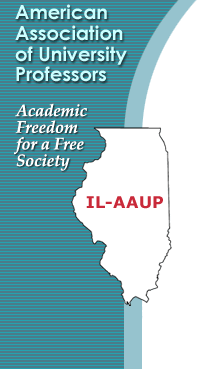 |
|
The Continuing Saga of St. Augustine College
By Lee Maltby
In a press release dated March 23, 2007, the Rt. Rev. Victor A. Scantlebury announced the retirement of the president of St. Augustine College, Dr. C.Z. Brennan. In addition to lauding a number of her accomplishments, the bishop noted that under Dr. Brennan the “financial position of the institution had been strengthened.”
Dr. Brennan’s retirement in March came after a no-confidence vote in her leadership by the faculty of St. Augustine in November 2006. Now, in October 2007, the College has embarked on a search for a new president, while working furiously to prepare for the upcoming visit by the North Central Association (NCA) of the Higher Learning Commission in March 2008. In order to prepare for the visit, the college hired two consultants to assist the administration, faculty, and the Board of Trustees (BOT). An important step in the process occurred on October 23, when the BOT approved a strategic plan for the next five years. The plan was developed under the direction of one of the consultants after a lengthy process that included hearing from major stakeholders, including faculty and chairs, administration and staff, students, alumni, community members, and board members. The most important goal of the strategic plan is “Attain full debt retirement, a comprehensive fiscal plan, and an emerging endowment.” The remaining goals, which follow the goal of debt retirement and comprehensive fiscal plan, depend on that stated goal. The question now is, is the BOT ready and able to “own” the strategic plan?
Under normal circumstances, the ownership of a strategic plan would not seem to be a very difficult task. Yet for a Board that apparently has done very little to support St. Augustine, this strategic plan calls for some major changes, with the onus placed squarely on the BOT. This responsibility is all the greater, due to the fact that when NCA last visited St. Augustine in 1999, the proverbial wool was pulled over the commissioner’s eyes. In May 1999, NCA reaffirmed St. Augustine for eight years. Three months later, in August, the house of cards came tumbling down. Key financial information had not been provided to the site visitors. Once the facts became known, the founder and president of the College was forced out by the bank, the College had to sell its site in Aurora, and there were major layoffs in the College just weeks before Christmas in 1999. Since that time, the College has struggled to remain true to its mission, while paying off its financial obligations. The bond debt currently stands at approximately $7,590,000, and the College will most likely not be able to pay its obligations that are due this year.
In the period from 1999 to 2007, the BOT does not appear to have contributed in any significant manner to reducing the bond debt. A year ago there were more layoffs, positions have been left empty to save money, the human resources office was outsourced the year before (under Dr. Brennan), enrollment has not increased, and faculty and staff are stretched to the limit. This history of the BOT not generating any significant support for the College underscores the huge changes that the BOT has committed itself to by approving the strategic plan.
One of the more interesting outcomes of the work done by the consultants was the unearthing of the BOT by-laws. To the surprise of many, St. Augustine, which was founded under the “auspices” of the Episcopal Diocese of Chicago, is supposed to be an organization that has implemented “activities and programs that systematically and comprehensively institutionalize, access and exposure to the Episcopal faith consistent with a mission, values and philosophy of the College.” There is to be an “establishing and fostering [of] faith initiatives into the life of the College,” as well as a chaplain who will hold liturgical services and offer pastoral counseling for students. It is also a fact that the BOT president is an Episcopal bishop, at least 35% of the BOT must be Episcopalian, and that two Episcopal priests sit on the BOT. In light of the strong presence of the Episcopalian Diocese on the BOT, and that the bond debt, which has not been significantly dealt with in eight years, and which is strangling the College, perhaps faculty and staff can be forgiven for asking “What has the Episcopal Diocese done lately for St. Augustine?”
Perhaps faculty and staff may need to be forgiven for their skepticism that the BOT will in fact save the College. Even as the administration and faculty buy into a comprehensive plan for the assessment of student learning at St. Augustine, the reality is that NO plan will succeed if the strategic plan is not supported by concrete action from the BOT. Every person who pays their bills when they come due understands the simple fact that if there is no money in the bank, you can not function as you have been. As it stands now, St. Augustine is at a crucial turning point in its history. If it can not offer strong educational programs and services to students, which are offered by faculty who participate in college governance (including a voting seat on the BOT), who enjoy academic freedom, and who are compensated fairly for their work, the College will fall farther behind its competitors, and a truly wonderful and beautiful mission will become a memory. It would appear that the stated “strengthening” of the College’s financial position was not as strong as some would like to believe.
|
|


